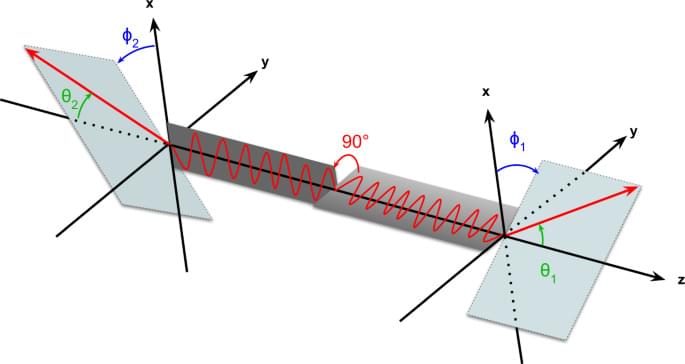Black holes were once thought not to have pressure, but a new set of quantum calculations has found that they may have some at their edges, which was completely unexpected.





A new interpretation of quantum mechanics sees agents as playing an active role in the creation of reality. Blake Stacey outlines the case for QBism and its radical potential.
The pandemic shut down our university when I was in the middle of giving a lecture. We had been anticipating the possibility for a few days, but it was still impeccable timing. I finished my spiel, out came the phones, and suddenly we weren’t going to see each other post-spring break after all. For the rest of the term, I did what so many teachers found themselves doing: gamely trying to soldier on. I scrounged and borrowed a whiteboard, easel and webcam, set myself up in the nicest light the house had to offer, and did my best to convey graduate-level physics to an audience of tiny rectangles. And like so many other teachers, I learned there’s nothing like a radical change of circumstances for driving one to re-evaluate what the essential ideas of a subject must be.

Isaac Nape, an emerging South African talent in the study of quantum optics, is part of a crack team of Wits physicists who led an international study that revealed the hidden structures of quantum entangled states. The study was published in the renowned scientific journal, Nature Communications, on Friday, 27 August 2021.
Nape is pursuing his Ph.D. at Wits University and focuses on harnessing structured patterns of light for high dimensional information encoding and decoding for use in quantum communication.
Earlier this year he scooped up two awards at the South African Institute of Physics (SAIP) conference to add to his growing collection of accolades in the field of optics and photonics. He won the award for “Best Ph.D. oral presentation in applied physics,” and jointly won the award for “Best Ph.D. oral presentation in photonics.”
Theories that try to explain these big metaphysical mysteries fall short, making agnosticism the only sensible stance.


Quantum Machines, an Israeli startup that is building the classical hardware and software infrastructure to help run quantum machines, announced a $50 million Series B investment today.
Today’s round was led by Red Dot Capital Partners with help from Exor, Claridge Israel, Samsung NEXT, Valor Equity Partners, Atreides Management, LP, as well as TLV Partners, Battery Ventures, 2i Ventures and other existing investors. The company has now raised approximately $83 million, according to Crunchbase data.
While quantum computing in general is in its early days, Quantum Machines has developed a nice niche by building a hardware and software system, what they call The Quantum Orchestration Platform, that helps run the burgeoning quantum machines, leaving it plenty of room to grow as the industry develops.


Gamma photons used in positron emission tomography are predicted to be produced in an entangled state. Here, the authors simulate the effects of entanglement and test them through comparison with experimental data from a PET demonstrator apparatus, showing the potential gains in background suppression.